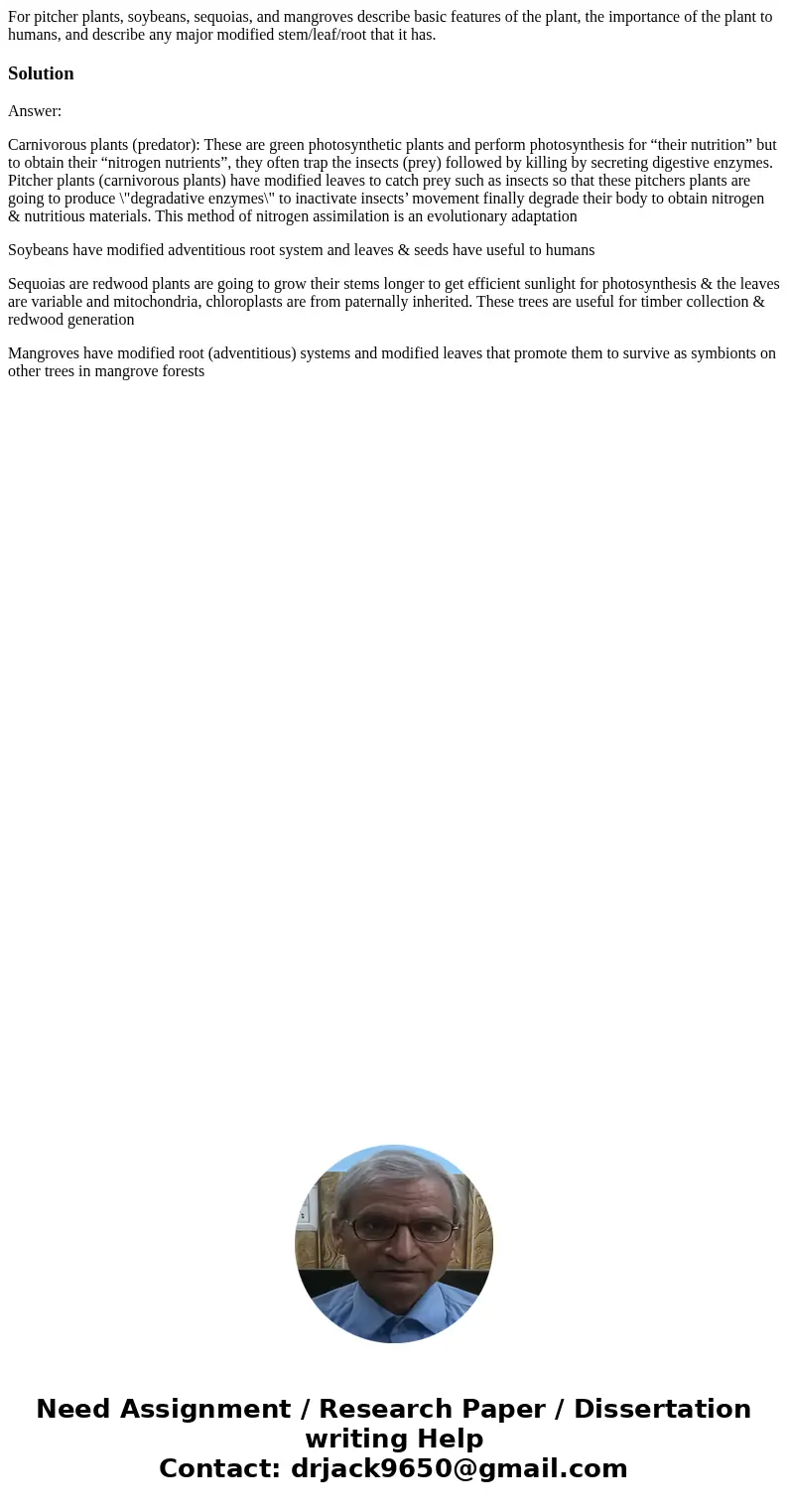For pitcher plants soybeans sequoias and mangroves describe
For pitcher plants, soybeans, sequoias, and mangroves describe basic features of the plant, the importance of the plant to humans, and describe any major modified stem/leaf/root that it has.
Solution
Answer:
Carnivorous plants (predator): These are green photosynthetic plants and perform photosynthesis for “their nutrition” but to obtain their “nitrogen nutrients”, they often trap the insects (prey) followed by killing by secreting digestive enzymes. Pitcher plants (carnivorous plants) have modified leaves to catch prey such as insects so that these pitchers plants are going to produce \"degradative enzymes\" to inactivate insects’ movement finally degrade their body to obtain nitrogen & nutritious materials. This method of nitrogen assimilation is an evolutionary adaptation
Soybeans have modified adventitious root system and leaves & seeds have useful to humans
Sequoias are redwood plants are going to grow their stems longer to get efficient sunlight for photosynthesis & the leaves are variable and mitochondria, chloroplasts are from paternally inherited. These trees are useful for timber collection & redwood generation
Mangroves have modified root (adventitious) systems and modified leaves that promote them to survive as symbionts on other trees in mangrove forests

 Homework Sourse
Homework Sourse